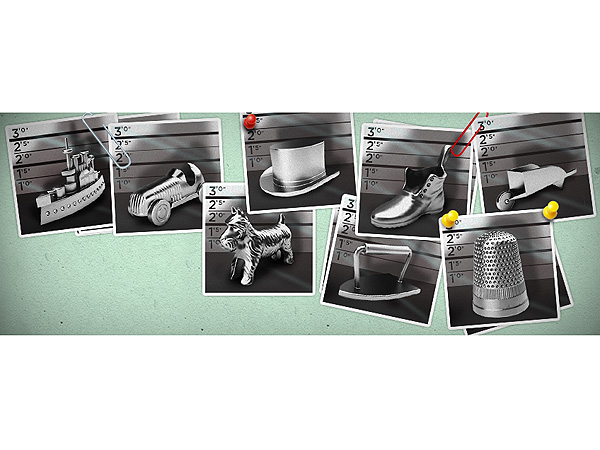The first clues appeared in Kenya, Uganda and what is now South Sudan. A British arms researcher surveying ammunition used by government forces and civilian militias in 2006 found Kalashnikov rifle cartridges he had not seen before. The ammunition bore no factory code, suggesting that its manufacturer hoped to avoid detection.
Within two years other researchers were finding identical cartridges circulating through the ethnic violence in Darfur. Similar ammunition then turned up in 2009 in a stadium in Conakry, Guinea, where soldiers had fired on antigovernment protesters, killing more than 150.
For six years, a group of independent arms-trafficking researchers worked to pin down the source of the mystery cartridges. Exchanging information from four continents, they concluded that someone had been quietly funneling rifle and machine-gun ammunition into regions of protracted conflict, and had managed to elude exposure for years. Their only goal was to solve the mystery, not implicate any specific nation.
When the investigators’ breakthrough came, it carried a surprise. The manufacturer was not one of Africa’s usual suspects. It was Iran.
Iran has a well-developed military manufacturing sector, but has not exported its weapons in quantities rivaling those of the heavyweights in the global arms trade, including the United States, Russia, China and several European states. But its export choices in this case were significant. While small-arms ammunition attracts less attention than strategic weapons or arms that have drawn international condemnation, like land mines and cluster bombs, it is a basic ingredient of organized violence, and involved each year and at each war in uncountable deaths and crimes.
And for the past several years, even as Iran faced intensive foreign scrutiny over its nuclear program and for supporting proxies across the Middle East, its state-manufactured ammunition was distributed through secretive networks to a long list of combatants, including in regions under United Nations arms embargoes.
The trail of evidence uncovered by the investigation found Iranian cartridges in the possession of rebels in Ivory Coast, federal troops in the Democratic Republic of Congo, the Taliban in Afghanistan and groups affiliated with Al Qaeda in the Maghreb in Niger. The ammunition was linked to spectacular examples of state-sponsored violence and armed groups connected to terrorism — all without drawing wide attention or leading back to its manufacturer.
The ammunition, matched to the world’s most abundant firearms, has principally been documented in Africa, where the researchers concluded that untold quantities have been supplied to governments in Guinea, Kenya, Ivory Coast and, the evidence suggests, Sudan.
From there, it traveled to many of the continent’s most volatile locales, becoming an instrument of violence in some of Africa’s ugliest wars and for brutal regimes. And while the wide redistribution within Africa may be the work of African governments, the same ammunition has also been found elsewhere, including in an insurgent arms cache in Iraq and on a ship intercepted as it headed for the Gaza Strip.
Iran’s role in providing arms to allies and to those who fight its enemies has long been broadly understood. Some of these practices were most recently reported in the transfer of Fajr-5 ground-to-ground rockets to Gaza. Its expanding footprint of small-arms ammunition exports has pushed questions about its roles in a shadowy ammunition trade high onto the list of research priorities for trafficking investigators.
“If you had asked me not too long ago what Iran’s role in small-arms ammunition trafficking to Africa had been, I would have said, ‘Not much,’ ” said James Bevan, a former United Nations investigator who since 2011 has been director of Conflict Armament Research, a private firm registered in England that identifies and tracks conventional weapons. “Our understanding of that is changing.”
The independent investigation also demonstrated the relative ease with which weapons and munitions flow about the world, a characteristic of the arms trade that might partially explain how Iran sidestepped scrutiny of governments and international organizations, including the United Nations, that have tried to restrict its banking transactions and arms sales.
The United Nations, in a series of resolutions, has similarly tried to block arms transfers into Ivory Coast, Congo and Sudan — all places where researchers found Iranian ammunition.
Ammunition from other sources, including China, Russia, Hungary, the Czech Republic and other former Soviet bloc states remain in circulation in Africa, along with production by African states. Why Iran has entered the market is not clear. Profit motives as well as an effort by Iran to gain influence in Africa might explain the exports, Mr. Bevan said. But much remains unknown.
Neither the government of Iran nor its military manufacturing conglomerate, the Defense Industries Organization, or DIO, replied to written queries submitted for this article.
The researchers involved in the investigation — including several former experts for the United Nations and one from Amnesty International — documented the expanding circulation of Iranian ammunition, not the means or the entities that have actually exported the stocks. They are not sure if the ammunition had been directly sold by the Iranian government or its security services, by a government- or military-controlled firm, or by front companies abroad.











